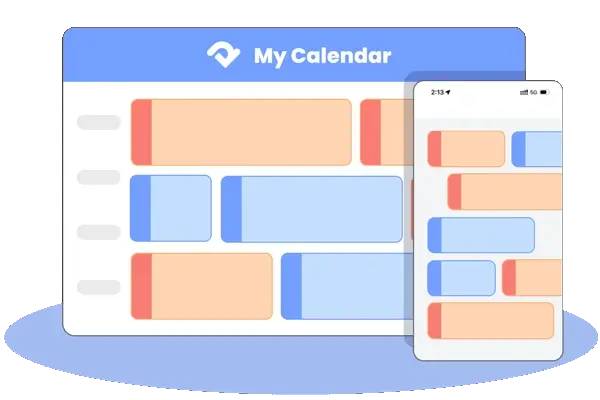Setting the perfect rack rate is all about finding the sweet spot for your hotel’s success. It’s not just about slapping a price on the room, it's the foundation of your revenue strategy and the first impression guests get of your value. Get it wrong, and you may risk leaving money or turning potential guests away. In this guide, we'll reveal the secrets to setting rack rates so you can maximize profits.
What Are Rack Rates in Hotels?
Rack rate is a term every hotel owner knows, but not everyone fully understands its critical role in a winning pricing strategy. In short, the rack rate is the highest published price for a room, excluding any discounts, promotions, or negotiated rates. It’s the “official” rate shown at the front desk, on your website, or in brochures—though it’s rarely the actual price guests pay.
So, why does rack rate exist? The rack rate acts as a “price ceiling,” setting the maximum value for a room. For guests, it provides a benchmark to gauge the attractiveness of special offers. When they see a room with a rack rate is $200, but it's currently on sale for $120, they feel they’ve scored a great deal. For hotel operators, it’s a strategic foundation. During peak seasons with high demand, rooms may sell close to the rack rate. In slower periods, you can offer discounts while still referencing the full rate in marketing, preserving your brand’s perceived value.
Moreover, rack rate is the starting point for contracts and negotiations between businesses and online travel agencies (OTAs). Setting the rate too low could limit your long-term revenue potential. In essence, the rack rate is more than just a number, it’s a key in balancing profitability and brand positioning.
Why Are Hotel Rack Rates Important?
Hotel rack rates are far from a mere formality; they play several crucial roles that significantly impact your business.
On the one hand, they establish the perceived value of your rooms. Even though guests rarely pay the full rack rate, it’s the cornerstone that shapes how they view your hotel’s worth. Every discount or promotion gains its allure by being compared to this baseline.
On the other hand, rack rates offer flexibility in pricing. They allow you to adapt to fluctuating demand, seasonal changes, and different booking channels. Whether it’s a last-minute deal for a vacant room or a loyalty program discount, referencing the rack rate enhances the perception of savings, all while maintaining your brand’s integrity.
In addition, they’re vital for partnerships too. Travel agents, corporate clients, and distribution platforms all rely on rack rates as a reference in negotiations. A reasonable rack rate can give you an advantage and offer competitive discounts while also protecting your profit margins. In conclusion, a carefully calibrated rack rate builds trust with guests, empowers intelligent pricing decisions, and carves out a distinct position for your hotel in a competitive market. It’s the silent yet powerful force that can drive your business forward.
Setting the proper rack rate takes more than intuition—it requires data, comparison, and clever tools. That’s why many hotels turn to modern property management systems (PMS) to simplify this process. With Smart Order PMS, hoteliers can access real-time competitor rates, monitor reservation trends, and adjust pricing throughout channels in just a few clicks.
Now, let’s look at the ten key factors you need to think about when calculating your hotel’s rack rate.
How to Calculate Your Hotel Rack Rates
Formulating an effective rack rate requires a multi-dimensional perspective. Here are ten factors that influence the rack rate.
1. Know Your Competitors' Rack Rates
Before confirming your hotel’s rack rate, keep a close eye on what your competitors are charging. Check their websites, online journey agencies, and social media platforms regularly to get an accurate picture of their posted rates.
Understanding the pricing landscape in your location helps you position your hotel competitively. If your property provides unique services or a greater level of service, you may justify a slightly higher rack rate. In contrast, if competitors are priced significantly lower, you can also need to adjust your rack rate to attract price-sensitive guests without sacrificing profitability. Remember, it’s now not simply about matching rates—it’s about finding the sweet spot that showcases your hotel’s value while staying attractive in the market.
2. Know Your Target Customers' Spending Power
Understanding who your guests are is crucial. Are they budget travelers, business guests, or luxury seekers? Set your rack rate based on what they’re willing to pay. Conduct surveys, analyze booking data, and consider feedback. A price that aligns with your customers’ expectations will lead to higher bookings and better satisfaction.
3. Assess the Local Market Consumption Level
Pricing must reflect the local market's affordability. A hotel in a tourist-heavy area can usually charge more than one in a low-traffic region. Study local economic trends, tourism statistics, and booking patterns. Your rack rate should match what the average guest in your area can realistically afford.
4. Evaluate Your Hotel's Facilities and Amenities
Your hotel’s facilities and amenities define its value, directly impacting the rack rate. List all offerings, from basic Wi-Fi and cozy beds to premium perks like a rooftop pool or 24/7 room service.
Compare your amenities to competitors. Unique features, such as private beach access, can support a higher rack rate. For standard offerings, emphasize quality and upkeep. Guests pay for convenience and luxury—accurately assessing your amenities helps set a rate that attracts the right guests and boosts revenue.
5. Consider Brand Positioning and Star Rating
Your hotel's branding and official classification influence your perceived value. A boutique hotel may price differently from a chain brand, even with similar amenities. Likewise, a 4-star hotel is expected to charge more than a 2-star one. Align your rack rate with how you want the market to perceive your property.
6. Factor in Your Location Advantages
Are you near tourist spots, business hubs, airports, or public transport? Location plays a big role in pricing. A central or strategic location justifies a higher rack rate, while remote properties may need to adjust downward. Highlight location benefits when communicating value.
7. Calculate Your Operating Costs
Always account for your costs—staff salaries, utilities, cleaning, supplies, maintenance, etc. Your rack rate must at least cover your operating expenses while allowing some flexibility for discounts. Knowing your cost per room night helps you avoid underpricing.
8. Define Your Profit Margin Goals
Decide how much profit you want to make per booking. Once you know your costs, add your desired profit margin to determine the rack rate. This ensures long-term sustainability and helps in revenue planning. Be realistic—too high a margin may scare off guests, while too low may hurt your business.
9. Plan for Promotions and Seasonal Changes
Your rack rate should leave room for discounts and promotions. Study patterns in demand across seasons, and prepare special rates for peak and off-peak periods. You also need space to offer deals for corporate clients, direct bookings, and OTA promotions. Flexibility is key.
10. Align with OTA Pricing Strategies
Online travel agencies (OTAs) often compete on price. Study how they display and discount rates. Make sure your rack rate allows room for commission fees while staying competitive. Keep your direct booking offers appealing so you can reduce dependency on OTA discounts over time.
Conclusion
Rack rate is now not simply a reference price, it is a key indicator of a hotel's company and market position. Setting the proper rack rate is the beginning factor for a profitable hotel experience. With the above information, you can set a fee that displays the price of your hotel and ensures long-term success.
Of course, this does not suggest that the room price is fixed. A cautiously calculated rack rate allows you to flexibly reply to seasonal trends, promotions, etc., whilst retaining your manufacturer image. What we want is to locate the proper balance: to continue to be aggressive whilst retaining profits, attracting more guests, and growing a reputation of a remarkable experience.
No matter what the market is, the greater correct and flexible your fee is, the increased your probability of success.

